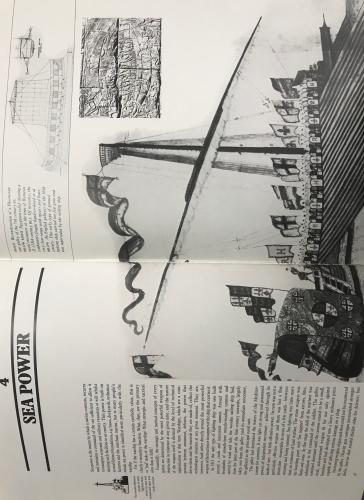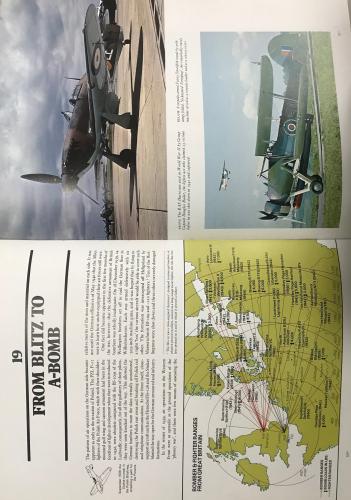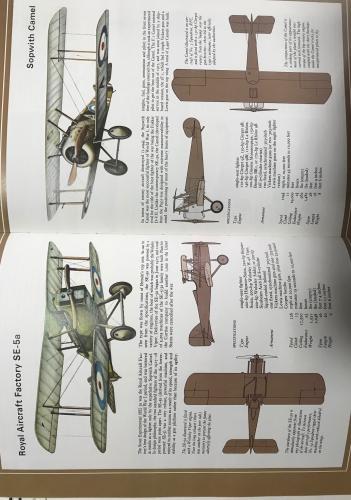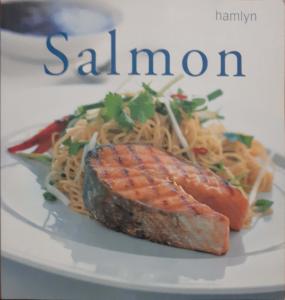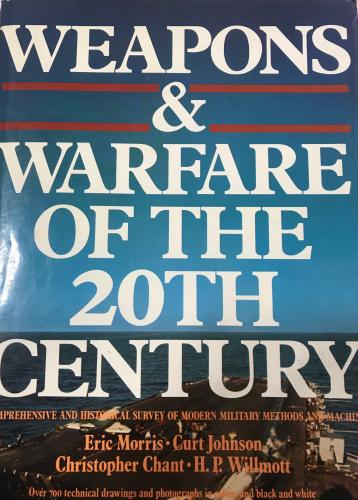
Weapons Warfare Of The 20 Th Century, Eric Morris, 63330, Octopus Books, Eğitim Kitapları, Kişisel Gelişim
INTRODUCTION in compiling this book has been be measured direct proport The purpose every major weapon system to have served in the modern' number and quality of its tank divisions. post-industrial period that, broadly, can be said to have The combination of the tank and the gun, allied to air- begun soon after the demise of Napoleon in 1815. Each craft, produced in the opening phase of World War II the main part of the book deals with a significant period -pre- fearsome realities of Blitzkrieg. If only for a short while, 914, the two world wars, the period between and the offensive warfare was demonstrated in its ultimate form to nuclear age since 1945. Within that pattern the principal that date. In the chapters surrounding this astonishing ts are subdivided into chapters dealing with events period Christopher Chant has traced with great skill the relating to one particular arm, usually in the sequence of growth of military aircraft from primitive biplanes that infantry, artillery, tanks, warships and aircraft. Four shuttled up and down the Western Front, their pilots con- authors, each with a special interest particular aspects of forming to their own strange code of chivalry, through to the supersonic combat machines of present times. modern warfare, have contributed chapters, thereby help- to build what amounts to a total history of warfare since Industrial Revolution. The history of war at sea is full of contrasts. H. P. Will- mott's account shows how the concept of sea power evolved during the 19th and early 20th centuries to become an In every period, whatever the political climate or the current state of the technological race, the ordinary foot soldier inevitably occupies a place at the heart of strategic planning. For despite man's perverse and ill-directed genius at producin efficiency, no such weapon in the political sense- win war on its own. In the analysis it is the unglamorous, often unsung infanteer who must take or hold territory in a manner that no computerized weapon system can rival. indispensable part of large-scale conflicts. In its most concrete form this perhaps reached peak in World War Il when the USA and Britain, though fiercely opposed, succeeded in transporting the necessary men and matériel across the oceans to wage mass war thousands of miles from their metropolitan territories. Their success was crucial to the outcome of the war. By contrast, in the present age we are witnessing a new exercise in the political use of sea g weapons that kill with ever-greater At one time land warfare was controlled by a famous power as the Russians seek, by extending their naval triumvirate - horse, foot and guns. We have briefly looked presence across the oceans of the world, to exert greater the role of the infantry- the 'poor foot' of numberless influence over the nations they patrol in this way campaigns. Of the other two arms, the gunner's art was All the weapon sstems so far mentioned now face addi- always the more scientifically demanding, calling for a tional challenges from the missile. For almost twenty years brand of professionalism not generally found in the more the missile's supporters have been proclaiming the end of debonair outlook of cavalrymen. By the second half of the the gun - even though each successive conflict seems to 19th century, moreover, the horse was beginning to lose its illustrate the gun's advantages over the missile rather than usefulness. As Curt Johnson explains in the chapters the reverse. Yet whatever shape the weapons of the future focusing on artillery, guns were now in the main too deadly may take, the nature of the human element in war is be stifled by a boot-to-boot cavalry charge. Then the unlikely to show radical change. In particular, the infantry- internal combustion engine arrived, and the horse faded man's appetite for survival seems undiminished, as does still further from view. In 1916 came the tank, and with it a the need of governments for an uninterrupted flow of men new battlefield equation was set before the generals. to be deployed variously against conventional forces and In its short, tempestuous history the tank has found its guerrilla units and to assist the civil powers, providing a most potent foe in the artillery piece. Many pundits would human buffer between state policies and dissident civilians argue that it has been a great error to see the tank, as many In this story of weapons and warfare, a story otherwise have done, as the modern extension of horse cavalry rather dominated by astonishing technological achievements, we than as it was originally envisaged, namely as a mobile have therefore been concerned to emphasize the role of the artillery weapon in siege environment. Perhaps of all the foot soldier, better protected than he used to be, and weapon systems discussed in this book the tank is the most capable occasion of neutralizing an opponent's armour emotive. Its image and shape menacing, suggesting and air support-but still, as ever, depending for survival irresistible powers. From the first it was used as a terror his wits and efficiency as a human being. weapon, and today we find that this aspect has assumed a new political relevance, for, irrespective of the might and weight of its nuclear arsenal, a nation's aggressive intent ERIC MO
Kitap, ucuz kitap, kitap al, kitap satın al, ucuz kitap al, uygun kitap, en uygun kitap, en ucuz kitap, kitap al bul, ucuza kitap al, en ucuz kitap al, hesaplı kitap, ucuz kitap satın al, incikitap com,
ÖNEMLİ AÇIKLAMA: Siz değerli okuyuculara satışa sunduğumuz ürünlerin büyük kısmı “kullanılmış ikinci el” kitaplardır. Kitap ve süreli yayınlar mezatlarında ürünlerin ilk sahibi ve sonraki sahipleri sayfaları yazı,çizim ya da notlar almış olabilir. Sonuç itibariyle daha önceden bir veya daha fazla kişi tarafından kullanılmış olabileceğini lütfen göz ardı etmeyiniz. Satışa sunduğumuz kitapların genel görünümü herkesçe kabul edilebilir standartlara uygun olarak ve olabildiğince açık bir şekilde belirtmeye, fotoğraflamaya gayret gösteren İNCİKİTAP sitemizi gezdiğiniz için şimdiden teşekkür ederiz. Mutlu Kitap Okumalar Dileğiyle.
Weapons Warfare Of The 20 Th Century, Eric Morris, 63330, Octopus Books, Eğitim Kitapları, Kişisel Gelişim
INTRODUCTION in compiling this book has been be measured direct proport The purpose every major weapon system to have served in the modern' number and quality of its tank divisions. post-industrial period that, broadly, can be said to have The combination of the tank and the gun, allied to air- begun soon after the demise of Napoleon in 1815. Each craft, produced in the opening phase of World War II the main part of the book deals with a significant period -pre- fearsome realities of Blitzkrieg. If only for a short while, 914, the two world wars, the period between and the offensive warfare was demonstrated in its ultimate form to nuclear age since 1945. Within that pattern the principal that date. In the chapters surrounding this astonishing ts are subdivided into chapters dealing with events period Christopher Chant has traced with great skill the relating to one particular arm, usually in the sequence of growth of military aircraft from primitive biplanes that infantry, artillery, tanks, warships and aircraft. Four shuttled up and down the Western Front, their pilots con- authors, each with a special interest particular aspects of forming to their own strange code of chivalry, through to the supersonic combat machines of present times. modern warfare, have contributed chapters, thereby help- to build what amounts to a total history of warfare since Industrial Revolution. The history of war at sea is full of contrasts. H. P. Will- mott's account shows how the concept of sea power evolved during the 19th and early 20th centuries to become an In every period, whatever the political climate or the current state of the technological race, the ordinary foot soldier inevitably occupies a place at the heart of strategic planning. For despite man's perverse and ill-directed genius at producin efficiency, no such weapon in the political sense- win war on its own. In the analysis it is the unglamorous, often unsung infanteer who must take or hold territory in a manner that no computerized weapon system can rival. indispensable part of large-scale conflicts. In its most concrete form this perhaps reached peak in World War Il when the USA and Britain, though fiercely opposed, succeeded in transporting the necessary men and matériel across the oceans to wage mass war thousands of miles from their metropolitan territories. Their success was crucial to the outcome of the war. By contrast, in the present age we are witnessing a new exercise in the political use of sea g weapons that kill with ever-greater At one time land warfare was controlled by a famous power as the Russians seek, by extending their naval triumvirate - horse, foot and guns. We have briefly looked presence across the oceans of the world, to exert greater the role of the infantry- the 'poor foot' of numberless influence over the nations they patrol in this way campaigns. Of the other two arms, the gunner's art was All the weapon sstems so far mentioned now face addi- always the more scientifically demanding, calling for a tional challenges from the missile. For almost twenty years brand of professionalism not generally found in the more the missile's supporters have been proclaiming the end of debonair outlook of cavalrymen. By the second half of the the gun - even though each successive conflict seems to 19th century, moreover, the horse was beginning to lose its illustrate the gun's advantages over the missile rather than usefulness. As Curt Johnson explains in the chapters the reverse. Yet whatever shape the weapons of the future focusing on artillery, guns were now in the main too deadly may take, the nature of the human element in war is be stifled by a boot-to-boot cavalry charge. Then the unlikely to show radical change. In particular, the infantry- internal combustion engine arrived, and the horse faded man's appetite for survival seems undiminished, as does still further from view. In 1916 came the tank, and with it a the need of governments for an uninterrupted flow of men new battlefield equation was set before the generals. to be deployed variously against conventional forces and In its short, tempestuous history the tank has found its guerrilla units and to assist the civil powers, providing a most potent foe in the artillery piece. Many pundits would human buffer between state policies and dissident civilians argue that it has been a great error to see the tank, as many In this story of weapons and warfare, a story otherwise have done, as the modern extension of horse cavalry rather dominated by astonishing technological achievements, we than as it was originally envisaged, namely as a mobile have therefore been concerned to emphasize the role of the artillery weapon in siege environment. Perhaps of all the foot soldier, better protected than he used to be, and weapon systems discussed in this book the tank is the most capable occasion of neutralizing an opponent's armour emotive. Its image and shape menacing, suggesting and air support-but still, as ever, depending for survival irresistible powers. From the first it was used as a terror his wits and efficiency as a human being. weapon, and today we find that this aspect has assumed a new political relevance, for, irrespective of the might and weight of its nuclear arsenal, a nation's aggressive intent ERIC MO
Kitap, ucuz kitap, kitap al, kitap satın al, ucuz kitap al, uygun kitap, en uygun kitap, en ucuz kitap, kitap al bul, ucuza kitap al, en ucuz kitap al, hesaplı kitap, ucuz kitap satın al, incikitap com,
ÖNEMLİ AÇIKLAMA: Siz değerli okuyuculara satışa sunduğumuz ürünlerin büyük kısmı “kullanılmış ikinci el” kitaplardır. Kitap ve süreli yayınlar mezatlarında ürünlerin ilk sahibi ve sonraki sahipleri sayfaları yazı,çizim ya da notlar almış olabilir. Sonuç itibariyle daha önceden bir veya daha fazla kişi tarafından kullanılmış olabileceğini lütfen göz ardı etmeyiniz. Satışa sunduğumuz kitapların genel görünümü herkesçe kabul edilebilir standartlara uygun olarak ve olabildiğince açık bir şekilde belirtmeye, fotoğraflamaya gayret gösteren İNCİKİTAP sitemizi gezdiğiniz için şimdiden teşekkür ederiz. Mutlu Kitap Okumalar Dileğiyle.
| Taksit Sayısı | Taksit tutarı | Genel Toplam |
|---|---|---|
| Tek Çekim | 1.010,88 | 1.010,88 |
| 2 | 535,97 | 1.071,94 |
| 3 | 362,50 | 1.087,50 |
| 6 | 187,74 | 1.126,42 |
| Taksit Sayısı | Taksit tutarı | Genel Toplam |
|---|---|---|
| Tek Çekim | 1.010,88 | 1.010,88 |
| 2 | 535,97 | 1.071,94 |
| 3 | 362,50 | 1.087,50 |
| 6 | 187,74 | 1.126,42 |
| Taksit Sayısı | Taksit tutarı | Genel Toplam |
|---|---|---|
| Tek Çekim | 1.010,88 | 1.010,88 |
| 2 | 535,97 | 1.071,94 |
| 3 | 362,50 | 1.087,50 |
| 6 | 187,74 | 1.126,42 |
| Taksit Sayısı | Taksit tutarı | Genel Toplam |
|---|---|---|
| Tek Çekim | 1.010,88 | 1.010,88 |
| 2 | 535,97 | 1.071,94 |
| 3 | 362,50 | 1.087,50 |
| 6 | 187,74 | 1.126,42 |
| Taksit Sayısı | Taksit tutarı | Genel Toplam |
|---|---|---|
| Tek Çekim | 1.010,88 | 1.010,88 |
| 2 | 535,97 | 1.071,94 |
| 3 | 362,50 | 1.087,50 |
| 6 | 187,74 | 1.126,42 |
| Taksit Sayısı | Taksit tutarı | Genel Toplam |
|---|---|---|
| Tek Çekim | 1.010,88 | 1.010,88 |
| 2 | 535,97 | 1.071,94 |
| 3 | 362,50 | 1.087,50 |
| 6 | 187,74 | 1.126,42 |
| Taksit Sayısı | Taksit tutarı | Genel Toplam |
|---|---|---|
| Tek Çekim | 1.010,88 | 1.010,88 |
| 2 | - | - |
| 3 | - | - |
| 6 | - | - |

